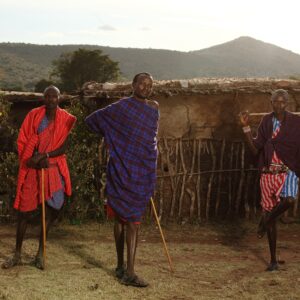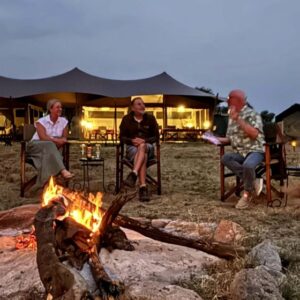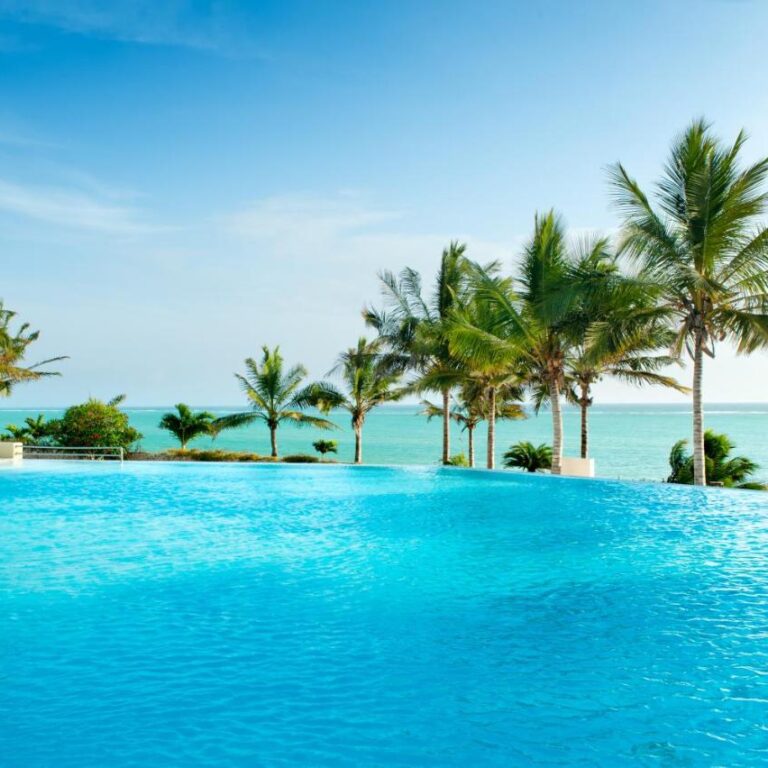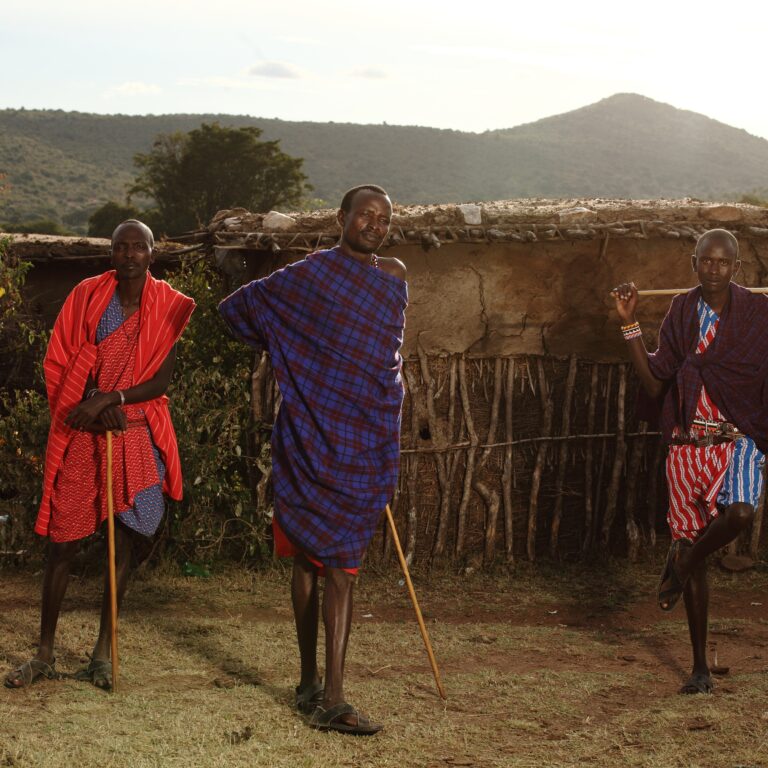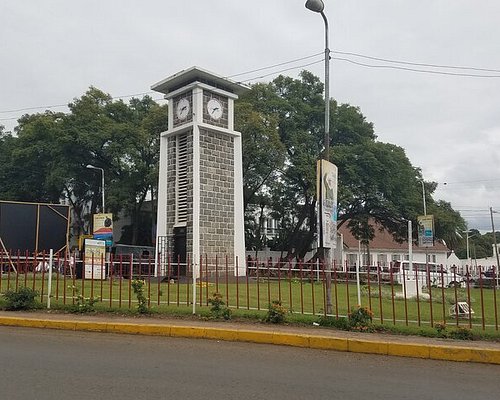Everything You Need to Know About Kilimanjaro National Park.
Rising majestically from the plains of Tanzania, Mount Kilimanjaro is not merely a mountain; it is a global icon, a dormant volcanic giant, and the highest peak in Africa. Encapsulated within Kilimanjaro National Park, this geological marvel beckons adventurers, dreamers, and photographers from across the globe, offering not a traditional wildlife “safari” in the conventional sense, but an unparalleled trekking expedition through diverse ecological zones to reach its snow-capped summit.
Climbing Kilimanjaro is a journey of physical challenge, mental fortitude, and breathtaking natural beauty. It’s an opportunity to stand on the “Roof of Africa,” gazing out over clouds and endless horizons. This comprehensive guide will illuminate every facet of Kilimanjaro National Park, from its unique ecosystems and the awe of its ascent to the practicalities of planning your monumental climb.
1. Overview – Kilimanjaro National Park
Kilimanjaro National Park, established in 1973 and designated a UNESCO World Heritage site in 1987, protects the entire mountain above the tree line and six forest corridors extending down through the montane forest. The park encompasses the mountain’s three distinct volcanic cones: Kibo (the highest, with Uhuru Peak), Mawenzi, and Shira.
Unlike most national parks in Tanzania, Kilimanjaro National Park is not primarily for vehicle-based wildlife viewing. Its main purpose is to preserve the mountain’s unique ecosystems and provide access for trekkers. The ascent takes climbers through a remarkable series of five distinct climatic zones – Cultivation, Rainforest, Heath/Moorland, Alpine Desert, and Arctic – each with its own unique flora and fauna, offering a truly diverse and awe-inspiring natural progression.
2. Trekking Reviews – Kilimanjaro National Park
Reviews for Kilimanjaro National Park are overwhelmingly centered around the trekking experience, rather than traditional safaris. Climbers consistently describe the ascent as challenging but incredibly rewarding, often calling it a “life-changing” or “once-in-a-lifetime” adventure.
Key Highlights from Reviews:
The Guides & Porters: The professionalism, knowledge, encouragement, and dedication of the local guides and porters receive universal acclaim. Many highlight their vital role in summit success and overall enjoyment.
Diverse Scenery: The journey through five distinct ecological zones is frequently praised for its beauty and variety, offering constant visual interest.
Summit Sunrise: Standing on Uhuru Peak at sunrise is the pinnacle, described as an emotional, breathtaking, and unforgettable experience.
Sense of Achievement: The profound feeling of accomplishment upon reaching the summit is a recurring theme.
Common Feedback/Challenges:
Altitude Sickness: Many reviews mention the challenge of Acute Mountain Sickness (AMS), underscoring the importance of choosing a longer route for better acclimatization.
Physical Demands: Acknowledgment that the climb is physically demanding, requiring prior training.
Cold on Summit Night: The extreme cold on summit night is often highlighted as a significant challenge.
Overall, reviews confirm that climbing Kilimanjaro is a monumental undertaking that delivers an unparalleled sense of achievement and incredible natural beauty, making it a highly recommended adventure.
3. Wildlife & Animals – Kilimanjaro National Park
While not a Big Five safari destination, Kilimanjaro National Park does support a surprising array of wildlife, particularly in its lower forest zones. As you ascend, the biodiversity decreases, replaced by more specialized, high-altitude adapted species.
Forest Zone (Lower Slopes): This dense rainforest is home to a variety of animals, though they can be elusive due to the thick vegetation.
Primates: Blue Monkeys, Black-and-White Colobus Monkeys (particularly striking with their long, flowing white tails), and Vervet Monkeys are commonly sighted.
Antelopes: Bushbucks, elands, and red duikers are present.
Other Mammals: Elephants (though rare and shy), buffalo (especially in the Shira Plateau area), leopards (extremely rare), and various smaller forest creatures like mongooses and civets.
Heath/Moorland Zone: As the forest thins, you might see smaller antelope, eland, and various rodents.
Alpine Desert & Arctic Zones: Wildlife is very sparse here, limited to hardy insects, some small rodents, and occasional birds that forage at higher altitudes.
4. Birds – Kilimanjaro National Park
Kilimanjaro National Park is a rewarding destination for birdwatchers, with over 179 recorded bird species across its various ecological zones.
Forest Zone: This is the most prolific area for birds, including:
Hartlaub’s Turaco: A beautiful, vibrant bird often seen in the montane forest.
Crowned Eagle: A powerful forest raptor.
Cinnamon Bracken Warbler: A small, elusive forest dweller.
Various sunbirds, hornbills, and woodpeckers.
Heath/Moorland & Alpine Zones: As you ascend, the birdlife becomes sparser but includes unique high-altitude species:
Lammergeier (Bearded Vulture): A magnificent raptor often seen soaring above the higher slopes.
Mountain Buzzard
Alpine Chat
Streaky Seedeater
White-necked Raven: Often seen around camps and feeding areas at higher altitudes.
5. Best Time to Visit – Kilimanjaro National Park (for Trekking)
Kilimanjaro can be climbed year-round, but certain months offer more favorable conditions, balancing weather and crowds.
Dry Seasons (Best Time):
January to March (Warmest, good visibility, less busy than peak dry season): Generally clear skies, warmer temperatures (especially lower down), and relatively fewer climbers than the later dry season.
June to October (Cooler, clearer, peak season): This is the most popular time due to consistently clear skies and dry conditions. July, August, and September are particularly favored, leading to more crowds on the mountain.
Wet Seasons:
November to December (Short Rains): Occasional afternoon showers. Can be a good time for fewer crowds, and the mountain is greener. Summit nights can still be clear.
March to May (Long Rains): Heaviest rainfall, making trails very muddy and challenging, and significantly reducing visibility. This is generally considered the least ideal time to climb. For the highest chance of clear skies and summit success, target January-March or June-October. If avoiding crowds is a priority, consider the shoulder months within these dry periods.
6. Weather & Climate – Kilimanjaro National Park
Kilimanjaro’s climate is highly varied due to its immense altitude, progressing through distinct ecological zones, each with its own microclimate.
Cultivation Zone (800m – 1,800m): Warm and humid.
Rainforest Zone (1,800m – 2,800m): High humidity, frequent rainfall, misty conditions. Temperatures moderate.
Heath/Moorland Zone (2,800m – 4,000m): Cooler, drier, and windier. Temperatures drop significantly at night.
Alpine Desert Zone (4,000m – 5,000m): Very dry, cold nights (below freezing), hot days. Strong winds.
Arctic Zone (5,000m – 5,895m): Extreme cold (often -10°C to -20°C / 14°F to -4°F, or colder with wind chill), strong winds, snow, and ice.
Key takeaway: Expect all four seasons in one day, and prepare for freezing temperatures on summit night regardless of the time of year.
7. Getting There – Kilimanjaro National Park
Access to Kilimanjaro National Park is straightforward, primarily via Kilimanjaro International Airport (JRO).
International Gateway: Most climbers fly into Kilimanjaro International Airport (JRO). It’s well-connected with direct flights from Europe (e.g., Amsterdam, Istanbul) and major African hubs (e.g., Addis Ababa, Nairobi).
Local Transfers: From JRO, it’s a relatively short drive (approx. 45 minutes to 1 hour) to Moshi town or Arusha city.
Moshi: The closest major town to Kilimanjaro, serving as the main base for most trekking operators. Many pre/post-climb hotels are here.
Arusha: A larger city, about 1.5-2 hours from JRO, also a major safari hub. Some operators base here.
Park Gates: Your climbing operator will handle all transfers to and from the specific park gate where your chosen route begins (e.g., Marangu Gate, Machame Gate, Lemosho Gate).
8. Malaria & Safety – Kilimanjaro National Park
Malaria: The risk of malaria at the higher altitudes of Kilimanjaro National Park (above 1,800m/6,000ft) is generally considered very low to non-existent due to the cooler temperatures. However, the lower slopes, Moshi town, and Arusha city are malaria risk areas.
Recommendation: Consult your doctor or a travel clinic well in advance regarding malaria prophylaxis for the pre/post-climb days spent at lower altitudes, and general mosquito bite prevention (repellent, long sleeves/trousers).
Safety (Primary Concern: Altitude Sickness):
Acute Mountain Sickness (AMS): This is the most significant health risk on Kilimanjaro. It’s caused by ascending too quickly. Symptoms range from mild (headache, nausea, fatigue) to severe (HACE, HAPE, which can be fatal).
Prevention of AMS:
Go “Pole Pole” (Slowly Slowly): This is the golden rule of Kilimanjaro. Don’t rush.
Choose a Longer Route: 7-day or 8-day routes allow for better acclimatization.
Stay Hydrated: Drink 3-5 liters of water daily.
Eat Well: Maintain energy levels.
Acclimatization Day: Some routes (like Lemosho) include a dedicated acclimatization day.
Guides & Porters: Kilimanjaro National Park regulations mandate that all climbs must be undertaken with a licensed guide and porters. Reputable operators provide experienced, Wilderness First Responder (WFR) or equivalent certified guides. They carry oxygen, pulse oximeters, and stretchers, and monitor your health closely.
Listen to your Guide: Your guide’s word is law on the mountain. If they tell you to descend due to AMS, you must comply.
Travel Insurance: Crucial. Ensure your travel insurance explicitly covers high-altitude trekking (up to 6,000m/19,700ft) and emergency medical evacuation (which can be very expensive).
9. Accommodations – Kilimanjaro National Park
Accommodation during a Kilimanjaro climb is standardized, while pre and post-climb accommodation in Moshi or Arusha varies by budget.
On the Mountain:
Tented Camps (Machame, Lemosho, Rongai, Umbwe Routes): Climbers sleep in dome tents (typically 2-person). A mess tent is provided for meals, and porters carry all camping equipment.
Huts (Marangu Route): Climbers stay in basic, communal huts (bunk beds). There are no private facilities, and sleeping bags are still required.
Pre & Post-Climb (Moshi/Arusha):
Budget: Simple guesthouses or hostels in Moshi or Arusha (e.g., AMEG Lodge, Keys Hotel basic rooms).
Mid-range: Comfortable hotels or lodges (e.g., Weru Weru River Lodge, Kaliwa Lodge in Moshi; Rivertrees Country Inn, Planet Lodge in Arusha).
Luxury: Boutique hotels or upscale lodges (e.g., Kilimanjaro Wonders Hotel in Moshi; Arusha Coffee Lodge, Gran Melia in Arusha).
10. Trekking Packages – Kilimanjaro National Park
Kilimanjaro treks are highly structured and are always organized by licensed tour operators. “Safari packages” here refer to “Trekking Packages.”
Inclusions: A standard package typically includes:
Park fees (the largest component, mandated by TANAPA).
Professional, licensed guides and assistant guides.
Porters (to carry gear, food, and equipment).
Cook.
All meals on the mountain (nutritious and abundant).
Water (purified and carried by porters).
Tents/Hut accommodation.
Basic safety equipment (oxygen, pulse oximeter, stretcher).
Transfers to/from park gate from your hotel.
Often 1-2 nights hotel accommodation before/after the climb.
Exclusions: International flights, visa fees, personal trekking gear (often available for rent), tips for guides/porters (mandatory and significant), travel insurance, personal expenses.
Types of Packages:
Budget: Focus on basic tents, simpler food, often larger groups. Cost: ~$2,000 – $2,500+ USD (for a 7-day climb, excluding tips).
Mid-range: Better quality tents/equipment, improved food, smaller groups. Cost: ~$2,500 – $3,500+ USD.
Luxury: Top-tier equipment, private toilets, gourmet food, highly experienced guides, often private groups, more amenities. Cost: ~$4,000 – $7,000+ USD.
Group vs. Private: Joining a group departure is usually more cost-effective as fixed costs are shared. Private climbs offer more flexibility but are more expensive per person.
Responsible Operators: Crucially, choose an operator that is a partner of KPAP (Kilimanjaro Porters Assistance Project) to ensure ethical treatment and fair wages for porters.
11. Packing List – Kilimanjaro National Park (for Climbing)
Packing for Kilimanjaro is complex due to the extreme variations in temperature and conditions. Layers are paramount.
Headwear:
Warm winter hat (wool or fleece).
Wide-brimmed sun hat.
Balaclava or neck gaiter.
Headlamp with spare batteries.
Handwear:
Thin liner gloves.
Warm, waterproof outer gloves or mittens.
Outerwear (Crucial Layers):
Waterproof and windproof shell jacket (Gore-Tex or equivalent).
Warm, insulated down jacket (800-fill power recommended for summit night).
Fleece jacket or warm synthetic layer.
Mid-Layers:
2-3 long-sleeved thermal tops (wool or synthetic).
1-2 fleece tops or mid-weight synthetic layers.
Base Layers:
2-3 pairs of thermal long johns (wool or synthetic).
2-3 moisture-wicking short-sleeved tops.
Bottoms:
Waterproof and windproof shell pants.
Fleece pants or warm synthetic pants.
Hiking trousers (zip-off convertible are great for lower altitudes).
Footwear:
Waterproof, insulated hiking boots (well-broken-in).
Camp shoes/sandals/sneakers for evenings.
5-6 pairs of good quality hiking socks (wool or synthetic).
2 pairs of warm summit socks.
Gaiters (to keep scree and moisture out of boots).
Sleeping:
Warm sleeping bag (rated to at least -15°C/5°F or colder).
Sleeping bag liner (adds warmth, keeps bag clean).
Sleeping pad (some operators provide).
Bags:
Large duffel bag (80-100L) for porters (soft-sided, waterproof).
Daypack (25-35L) for personal items, water, snacks.
Rain cover for daypack.
Trekking Gear:
Trekking poles (highly recommended).
Water bottles (Nalgene type) or hydration reservoir (3-4L capacity).
Headlamp with spare batteries.
Sunglasses (100% UV protection, preferably wrap-around).
Sunscreen (high SPF) and lip balm with SPF.
Personal Items:
Toiletries (toothbrush, toothpaste, small soap/shampoo, wet wipes).
Small quick-dry towel.
Personal medications and basic first-aid kit.
Snacks (energy bars, nuts, dried fruit).
Camera gear (extra batteries are crucial).
Power bank/portable charger.
Passport, visa, insurance documents.
Cash for tips (crisp USD bills).
12. Interesting Facts about Kilimanjaro National Park
Africa’s Highest Peak: Uhuru Peak on Kibo cone stands at 5,895 meters (19,341 feet) above sea level.
World’s Highest Free-Standing Mountain: It’s not part of a mountain range.
Three Volcanic Cones: Kibo (dormant), Mawenzi (eroded, jagged, extinct), and Shira (eroded, extinct).
Shrinking Glaciers: The ice cap on Kibo’s summit has significantly receded over the past century due to climate change.
Five Climatic Zones: Trekkers pass through cultivation, rainforest, heath/moorland, alpine desert, and arctic zones.
Home to the Critically Endangered Abbot’s Duiker: A small antelope found only in specific montane forests, including Kilimanjaro.
No Technical Climbing Required: Kilimanjaro is a “trekking peak,” meaning it doesn’t require technical climbing skills or equipment (ropes, ice axes, crampons, though microspikes may be useful in certain conditions). It’s primarily a test of endurance and acclimatization.
UNESCO World Heritage Site: Recognized for its outstanding universal value, encompassing its unique geological formations and diverse ecosystems.
“Pole Pole” (Slowly, Slowly): This Swahili phrase is the mantra for Kilimanjaro climbers, emphasizing the slow, steady pace crucial for acclimatization and summit success.
Thousands of Porters: The climbing industry provides vital employment for thousands of local Tanzanians, who work tirelessly to support climbers.
13. Top Unique Things and Activities to Do in Kilimanjaro National Park
Trek to Uhuru Peak: The ultimate activity. The multi-day ascent through diverse zones to reach Africa’s highest point is an unparalleled adventure.
Explore the Rainforest: Experience the lush, misty rainforest on the lower slopes, home to unique flora and primates.
Witness the Great Barranco Wall: A challenging but exhilarating scramble on the Machame and Lemosho routes, offering incredible views.
Star Gazing from High Camps: Far from light pollution, the night sky at high altitude is incredibly clear and filled with stars.
Document the Ecological Zones: Photograph the dramatic transitions between Kilimanjaro’s five distinct climatic zones, from lush forest to barren alpine desert.
Visit Mawenzi Peak: While technical climbing is required for Mawenzi, its jagged peaks offer stunning photographic backdrops, especially from routes that pass nearby.
Connect with Your Climbing Team: Learn about the local culture from your guides and porters, who are an integral part of the experience.
Day Hikes/Nature Walks (Lower Slopes): For those not attempting the summit, short hikes can be arranged in the forest zone to experience the park’s biodiversity.
14. Ultimate Complete Guide to Kilimanjaro National Park (Key Planning Elements)
Choose Your Route Wisely:
Longer Routes (7-8 days): Machame, Lemosho, Rongai are highly recommended for better acclimatization and higher success rates.
Shorter Routes (5-6 days): Marangu (huts) and Umbwe are more prone to AMS due to rapid ascent.
Physical Preparation: Begin a fitness regimen 3-6 months prior, focusing on cardio, strength, and endurance (long hikes, inclines).
Mental Fortitude: The climb is as much mental as physical. Be prepared for discomfort, cold, and fatigue.
Select a Reputable Operator: This is the most crucial decision. Choose a company with a strong safety record, experienced guides (certified in Wilderness First Aid), and ethical porter treatment (look for KPAP partners).
Book Well in Advance: Especially for peak seasons, book 9-12 months ahead.
Get Proper Gear: Invest in high-quality, layered clothing, a warm sleeping bag, and well-broken-in waterproof boots. Renting gear from your operator is an option.
Health Checks & Vaccinations: Consult your doctor about required vaccinations and anti-malarials. Discuss AMS prevention and medication (e.g., Diamox).
Hydration & Nutrition: Stay well-hydrated and eat enough on the mountain. Your cook will provide ample food.
Patience: The mantra “Pole Pole” is key. Go slow, conserve energy.
Tipping: Factor in significant tips for your guides and porters; this is a vital part of their income.
15. Kilimanjaro National Park FAQs
How difficult is it to climb Kilimanjaro? It’s physically challenging but not technically difficult. Success depends on fitness, mental resilience, and proper acclimatization (choosing a longer route).
Do I need special climbing experience? No, previous climbing experience is not required. However, you need to be in good physical condition and capable of sustained trekking for several days at high altitude.
What is the success rate for climbing Kilimanjaro? Success rates vary by route and operator. Shorter routes have lower success rates (e.g., 50-60%), while longer routes (7-8 days) with good acclimatization can have success rates of 80-90% for reaching the summit.
Is it possible to see snow on Kilimanjaro? Yes, the summit (Uhuru Peak) is permanently capped with glaciers and snow, although these have been significantly receding due to climate change.
Can I climb Kilimanjaro without a tour company? No. It is a strict regulation of Kilimanjaro National Park that all climbers must be accompanied by a licensed guide and porters, booked through a registered tour operator.
What is the youngest/oldest age to climb Kilimanjaro? The minimum age for climbing Kilimanjaro is 10 years old. There is no official maximum age, but climbers should be medically fit and well-prepared.
Kilimanjaro National Park offers far more than just a mountain; it offers an epic journey into oneself, through diverse ecosystems, culminating in a spectacular achievement. It is a profound testament to the spirit of adventure, a place where the grandeur of nature and the strength of human endeavor converge at the Roof of Africa.


